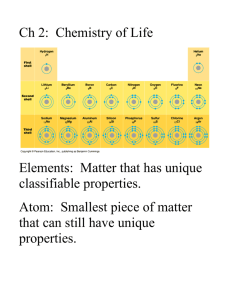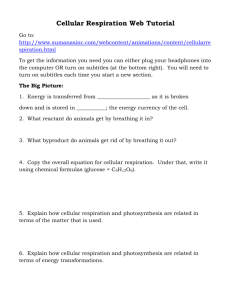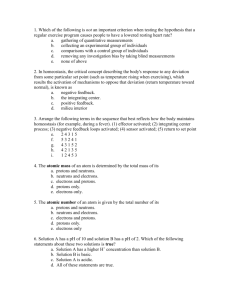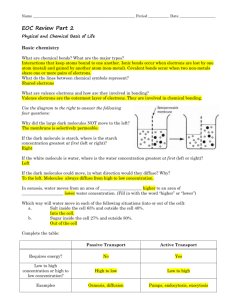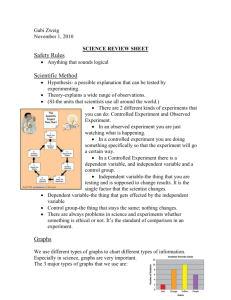Slide 1 - MisterSyracuse.com
advertisement
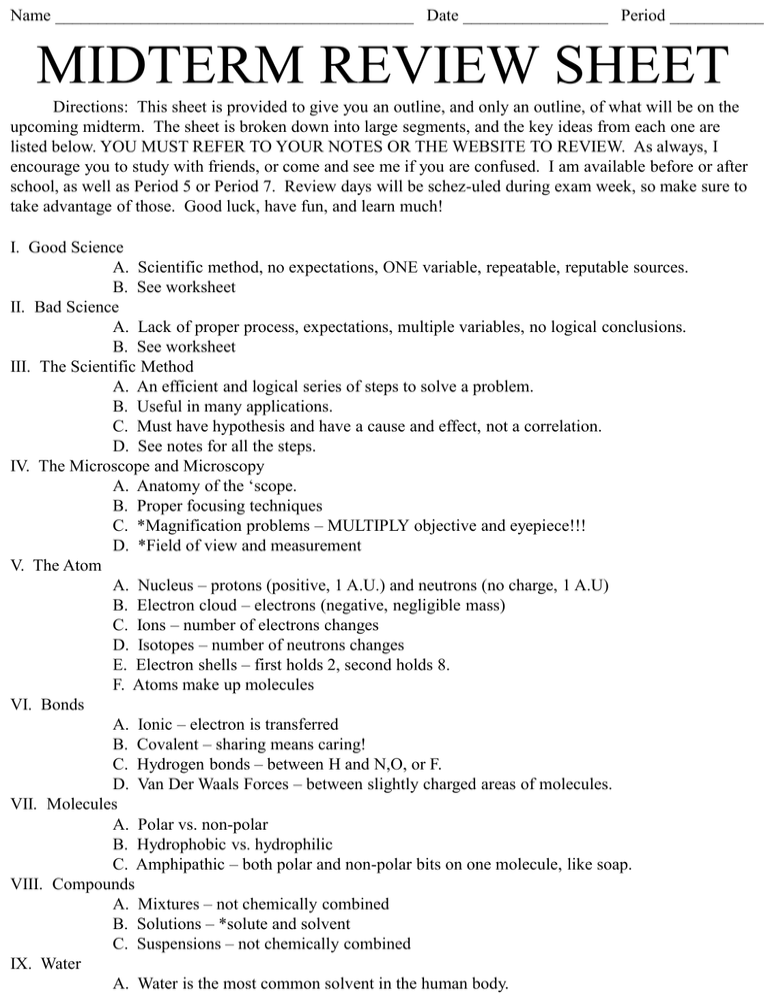
Name __________________________________________ Date _________________ Period ___________ MIDTERM REVIEW SHEET Directions: This sheet is provided to give you an outline, and only an outline, of what will be on the upcoming midterm. The sheet is broken down into large segments, and the key ideas from each one are listed below. YOU MUST REFER TO YOUR NOTES OR THE WEBSITE TO REVIEW. As always, I encourage you to study with friends, or come and see me if you are confused. I am available before or after school, as well as Period 5 or Period 7. Review days will be schez-uled during exam week, so make sure to take advantage of those. Good luck, have fun, and learn much! I. Good Science A. Scientific method, no expectations, ONE variable, repeatable, reputable sources. B. See worksheet II. Bad Science A. Lack of proper process, expectations, multiple variables, no logical conclusions. B. See worksheet III. The Scientific Method A. An efficient and logical series of steps to solve a problem. B. Useful in many applications. C. Must have hypothesis and have a cause and effect, not a correlation. D. See notes for all the steps. IV. The Microscope and Microscopy A. Anatomy of the ‘scope. B. Proper focusing techniques C. *Magnification problems – MULTIPLY objective and eyepiece!!! D. *Field of view and measurement V. The Atom A. Nucleus – protons (positive, 1 A.U.) and neutrons (no charge, 1 A.U) B. Electron cloud – electrons (negative, negligible mass) C. Ions – number of electrons changes D. Isotopes – number of neutrons changes E. Electron shells – first holds 2, second holds 8. F. Atoms make up molecules VI. Bonds A. Ionic – electron is transferred B. Covalent – sharing means caring! C. Hydrogen bonds – between H and N,O, or F. D. Van Der Waals Forces – between slightly charged areas of molecules. VII. Molecules A. Polar vs. non-polar B. Hydrophobic vs. hydrophilic C. Amphipathic – both polar and non-polar bits on one molecule, like soap. VIII. Compounds A. Mixtures – not chemically combined B. Solutions – *solute and solvent C. Suspensions – not chemically combined IX. Water A. Water is the most common solvent in the human body. B. Water is cohesive – forms hydrogen bonds with other water molecules C. Water expands when it freezes – the most important thing you ever heard. D. Water is polar – will only dissolve polar things X. Le Puissance d’Hydrogen A. Acids – low pH B. Bases – high pH C. pH scale is logarithmic – each step represents an increase of 10, not one. D. Acid – makes a lot of protons E. Base – doesn’t make a lot of protons, makes a lot of OHs. May also accept protons. F. Buffers – keep pH stable G. Amphiprotic – both acid and base H. pH must be kept at 7.4 in the blood to prevent proteins from unwinding and death. XI. The Molecules o’ Life A. Carbohydrates – ratio of CHO, uses, mono- di- poly- saccharides. B. Plant vs. animal starch – energy needs of plants vs. animals C. Glucose + galactose = lactose, glucose + glucose = maltose, glucose + fructose = sucrose D. Starch is a chain of glucoses….glucosi? E. Lipids – lots of H’s, so lots of energy F. Glycerol + fatty acids = lipid G. Saturated vs. unsaturated fatty acids, solid/liquid at room temp? H. Amino acids – amino group and carboxyl group. Long chain is a protein I. “Arrr!” group makes them different J. Chains form into very specific shapes K. Nucleic acids – form DNA and RNA. L. Nucleic acids are formed out of nucleotides – nitrogenous base (A,G,C,T), sugar, phosphate L. Form into a chain to transmit information. XII. Polymers A. Poly = many, mer = parts. B. Formed by removing a water molecule – condensation synthesis. C. If you join three molecules together, you remove two waters. So, you remove (n-1) waters XIII. Reactions A. Basic concepts of chemical reactions B. Function of enzymes XIV. The Cell Theory A. All living things are made of cells. B. All cells come from preexisting cells. C. The cells is the basic unit of life, and the smallest thing that can be alive. XV. How the first cells came to be A. Water is polar, lipids are non-polar, so when lipids are mixed with water, they tend to form hollow spheres. B. Organic (containing oxygen and carbon) molecules then moved inside. XVI. The organelles – look at your notes and the wiki…everything you need to know is there. A. Know the names and functions of all the organelles. B. Know how they all work together to keep a cell alive. XVII. The cell membrane – controls what goes in or out. A. Hypertonic, isotonic, hypotonic. B. Where the solute goes, the water follows. WTSGTWF. C. Plant cells like to be turgid (hypertonic), animal cells like to be isotonic. XVIII. Levels of organization – cells, tissues, organs, organ systems, organism XIX. The classroom as a cell – think about when we did this demonstration in class. What part did everyone play? XX. Cellular respiration A. Three parts: Glycolysis, Krebs cycle, and Electron Transport Chain B. Main purpose is to make ATP. C. Slowly rips apart glucose, breaking its bonds to release energy D. Using glucose’s electrons to run the ETC. XXI. Glycolysis A. Glucose is split in two by being phosphorylated (remember the hat?) B. We “invest” two ATPs, but make four, so the net gain is two. C. We also get a reduced compound: NADH, an electron carrier (draw the truck!) D. Final product is two molecules of pyruvate. XXII. Krebs Cycle A. Breaks down pyruvate to release its electrons and bond energy. B. Pyruvate is converted to actyl CoA, carbon dioxide is lost. C. Krebs cycle makes reduced compounds (NADH and FADH2), and three molecules of carbon dioxide as waste. D. Must regenerate oxaloacetate to keep the cycle going. XXIII. Electron Transport Chain A. Uses electrons carried by reduced compounds to power ETC. B. Electrons “fall” down the chain of proteins on the inner mitochondrial membrane. C. They pump protons across the inner membrane, into the inter-membrane space. D. These protons then “fall” down their concentration gradient, through ATP Synthase. E. This makes a whole bunch of ATP, about 36 molecules. XXIV. Important Stuff A. LEOGER – lost electron oxidized, gain electron reduced B. Molecules don’t like being phosphorylated, they get all jittery and fall apart. C. Glycolysis – cytoplasm. Krebs and ETC – mitochondrion. XXV. Fermentation A. Used when no oxygen is present. B. A means to “prop up” glycolysis, to get a small amount of ATP. C. Must have a place to put electrons (think of picking apples without a basket!). D. Fermentation oxidizes NADH to NAD+, so that more electrons can be added. XXVI. Classification A. Cladograms – know how to read them, nodes, etc. B. Dichotomous Keys C. Evolutionary relationships D. Best way to classify an organism is by its genes. E. Domain, Kingdom, Phylum, Class, Order, Family, Genus, Species XXVII. Bacterial Domains A. Differences between Eubacteria and Archebacteria B. How they do all the life processes RRR GENTS C. Gram Staining D. Cell walls – Eubacteria: peptidoglycan; Archeabacteria: Psuedopeptidoglycan XXVIII. Kingdom Protistia A. Single-celled B. How they do all the life processes RRR GENTS C. Reproduction by mitosis D. Eukaryotes XXX. Other Suggestions Review your notes carefully. Look at any diagrams that we have drawn. Also look at past quizzes, worksheets, and homeworks. Study about 15 minutes each day; do not try to cram everything in on the last day. The test will be multiple-choice, short answer, and longer answer questions, and will take you about an hour. Remember to READ all the questions VERY carefully, and leave NO NAKED NUMBERS, or you’ll get the red stamp, and yer points will be plundered, me matey. Studying with friends is always good, and remember that Mr. Syracuse will be in school every day during Exam Week, so if you need to talk to him, please come in and do so. After school review sessions are always helpful, and usually involve some sort of snack. MY REVIEW SESSION DATE AND TIME: __________________________________________________

